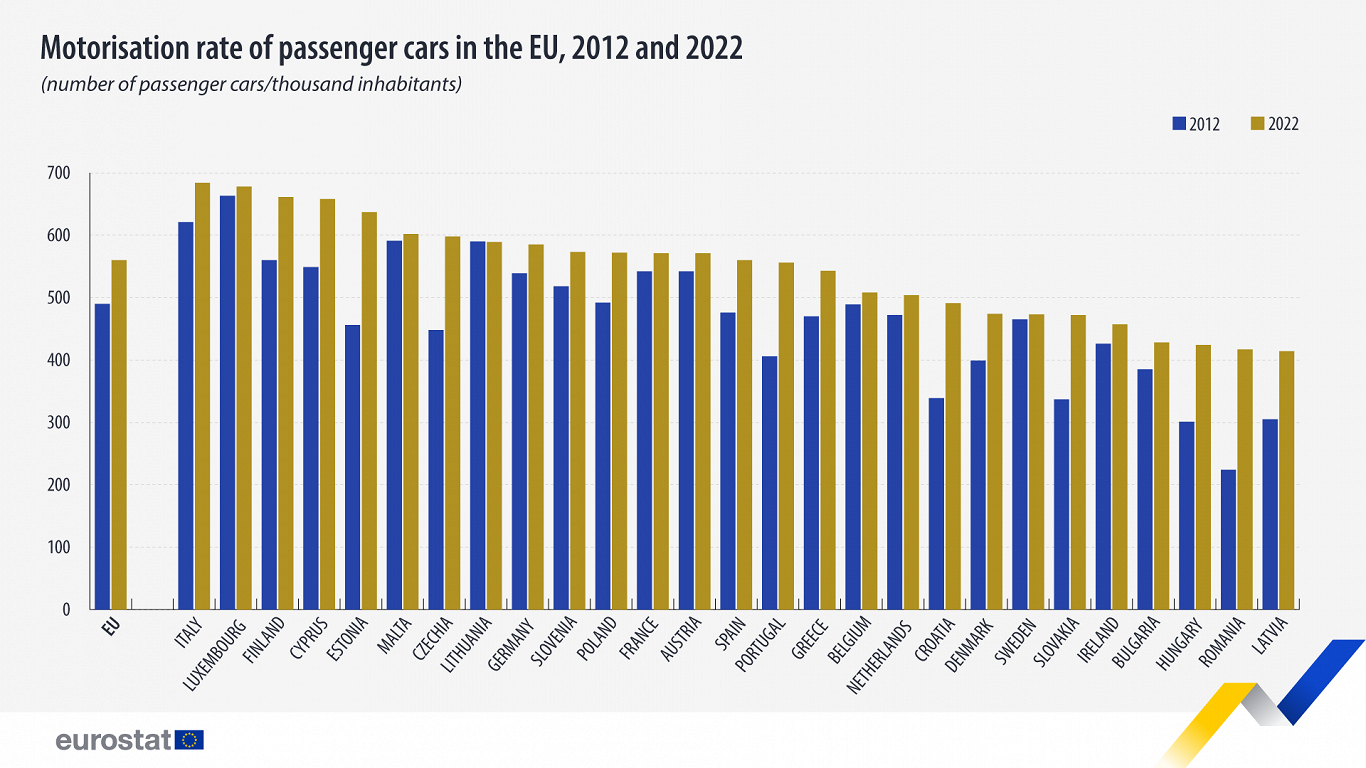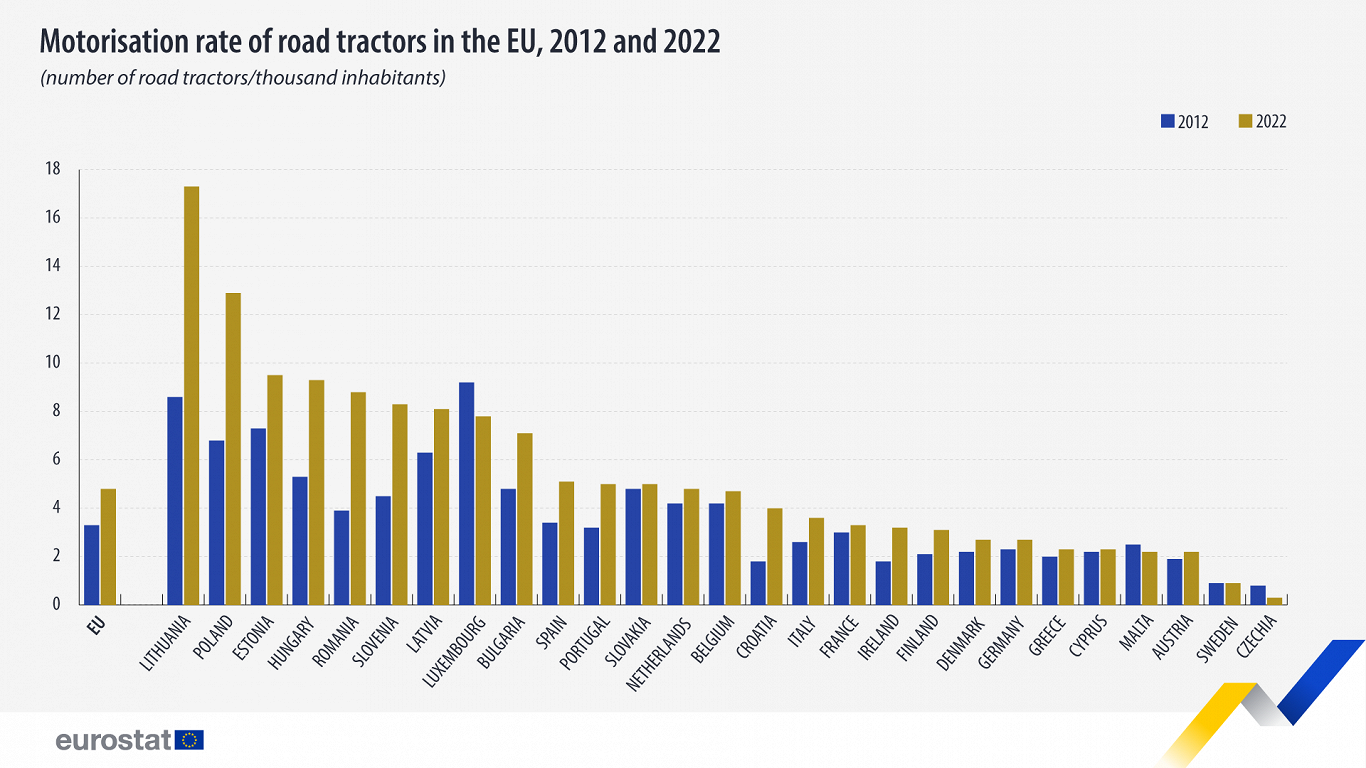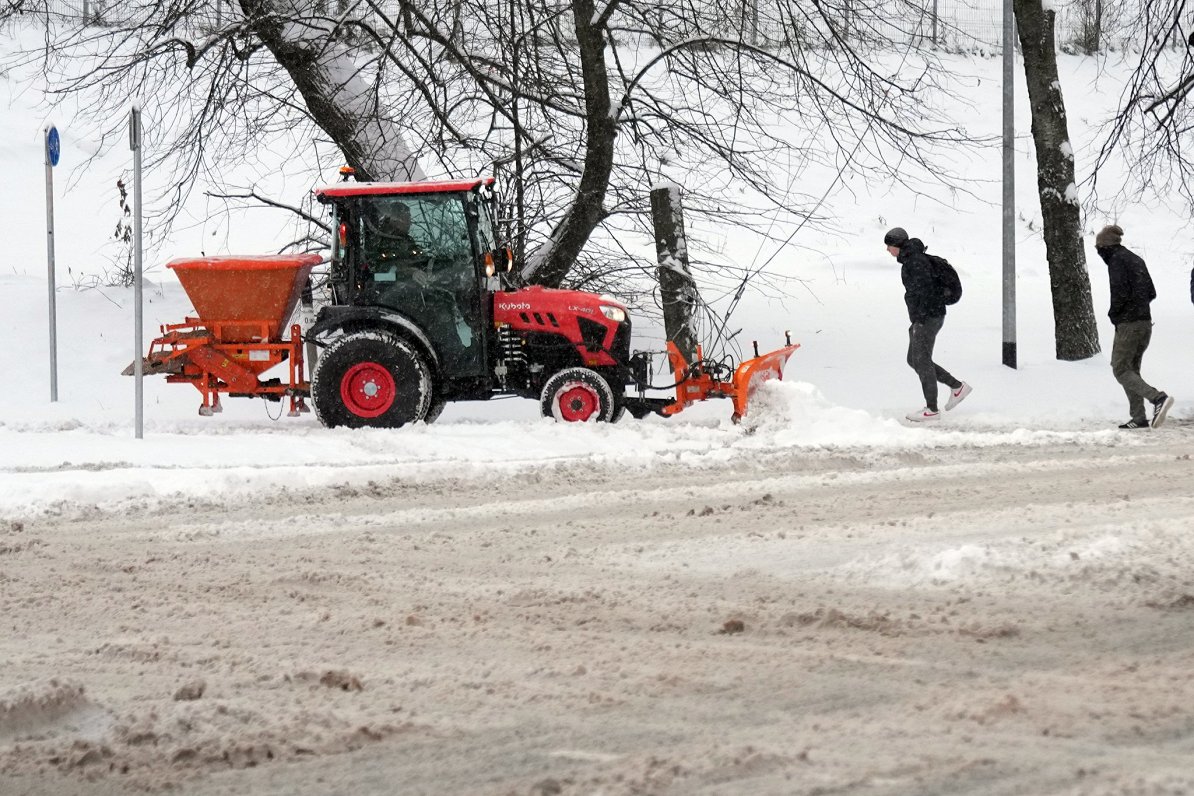Italy had the highest number with 684 passenger cars per 1 000 inhabitants and it was followed by Luxembourg (678), Finland (661), and Cyprus (658).
Meanwhile, Latvia had the lowest rate with 414 passenger cars per 1 000 inhabitants, followed by Romania (417), and Hungary (424).

Data show that central and eastern EU countries recorded high growth rates between 2012 and 2022. Among the EU countries, Romania registered the highest growth of passenger cars per 1 000 inhabitants (+86.2%; +193), followed by Croatia (+44.8%; +152), Hungary (+40.9%; +123), Slovakia (+40.1%; +135) and Estonia (+39.7%; +181). Latvia too saw growth, with its motorisation rate rising from just over 300 to more than 400 during the decade.
When it comes to tractors though, Latvia is among Europe's leaders. When looking at the number of road tractors per 1 000 inhabitants, the Baltic and some central and eastern EU members dominated in 2022. The highest rates were registered in Lithuania (an average of 17.3 road tractors per 1000 inhabitants), followed by Poland (12.9), Estonia (9.5), Hungary (9.3) and Romania (8.8). Latvia has 8 tractors per 1 000 inhabitants.
At the other end of the spectrum were Czechia (0.3), Sweden (0.9), Austria and Malta (both 2.2), Cyprus and Greece (both 2.3).

This information comes from data on transport statistics published by Eurostat January 17.





























